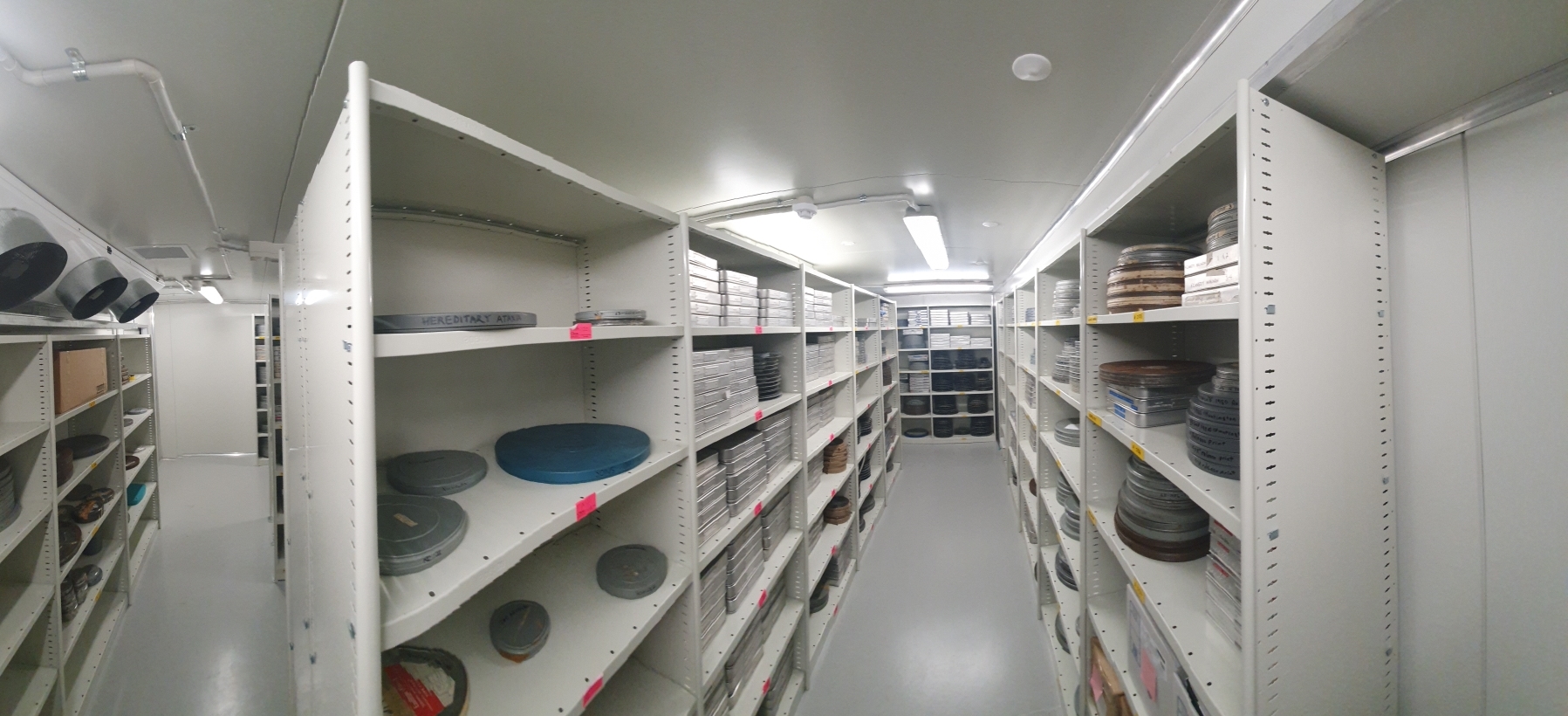Melanesian Film Archive
The Melanesian Film Archive is an extensive collection of medical and anthropological films. The medical films are principally concerned with the neurodegenerative disease kuru, and the work of Professor Michael Alpers (1934-2024) in discovering the transmission of the disease which was confined to the Eastern Highlands of Papua New Guinea.
The catalogued collection comprises 513 research documentary films on 16mm film reels. The film reels are housed by the University Archives in a purpose-built cold room to preserve the cellulose-acetate film. There is also film equipment, secondary and primary research, sound recordings, photographs, slides and negatives, journals and patrol books. The Archive also includes material from other regions of the world.
Access to the films is restricted.
How did Curtin come to have this Archive?
A Curtin Emeritus Professor, Professor Michael Alpers, was a recent medical graduate when he moved to the Eastern Highlands of Papua New Guinea with his young and growing family in 1961 and began his investigations into kuru. The only other researcher working on kuru at the time was Carleton Gajdusek, from the National Institutes of Health (NIH) in the United States, and they established a successful collaboration.
Over 2700 kuru patients and 1300 patients without kuru but originally suspected of having the disease were documented. These documents form the clinical archive, which, with the films, constitute the Archive and provide a full record of the disease and also information on the culture of the Fore linguistic group and other groups in the kuru-affected region. Gajdusek later expanded the collection of films at the NIH to include other peoples of Papua New Guinea and the Pacific and Indian Ocean regions.
The film collection was eventually sent into storage in Salem, Massachusetts. Professor Alpers joined Curtin University in 2001 and arrangements were made for the film archive to be sent to Perth. A cold room with strict temperature and humidity control was built at our Shenton Park campus in preparation for the arrival of the films, which occurred in 2005. When this campus closed in 2017, the Archive was moved to our main Bentley campus and the films were placed into a new purpose-built cold room.

What is kuru?
The kuru films commence in 1957 after Dr Carleton Gajdusek arrived in Okapa, a remote station in the Eastern Highlands of Papua New Guinea, whose administrative centre is the town of Goroka. With a small group of colleagues he documented and studied kuru, a disease that was epidemic among the Fore people of this remote area and the neighbouring groups with whom they intermarried.
The disease was called kuru by the Fore. Symptoms included shaking, inability to walk, muscular incoordination, headaches, uncontrolled laughing and behavioural changes. Death was inevitable and occurred usually around 12 months after onset.
The investigation by the researchers in the field and in medical laboratories in the United States found that a transmissible agent, which was eventually shown to be an infectious, self-propagating protein called a prion, was responsible for the disease.
The agent was introduced into the body by the mortuary practices of the Fore. When a Fore died, family members consumed his or her body. To the Fore this was a way of incorporating the body of the deceased into the living and freeing the spirit of the dead. In the 1950s the mortuary practices leading to the disease declined. The last known kuru patient died in 2009, demonstrating the long incubation period that is characteristic of kuru.
The problem of infectious agents spreading to and damaging healthy brain tissue was not just limited to kuru. The work in Melanesia led to findings around the world that applied also to other diseases. Illnesses that had long perplexed doctors could be grouped for study and research; they are now known collectively as prion diseases.
One such prion disease is Creutzfeldt-Jakob disease, which has a variant form known as ‘mad cow disease’ derived from a similar disease of cattle, bovine spongiform encephalopathy.
Research continues today as new findings lead to other areas of study. Prion research encompasses investigation into degenerative brain diseases, various forms of dementia, neurotoxicity and the role genetics plays in diseases of the brain.
Vale Professor Michael Alpers
Professor Michael Alpers AO, CSM, FRS, FAA and John Curtin Distinguished Professor of International Health at Curtin University, was an Australian medical researcher whose contribution to science and medicine improved public health outcomes for people around the world. His most known work was on the prion disease, kuru. Ever the humanitarian and scholar, he passed away on 3rd December 2024.